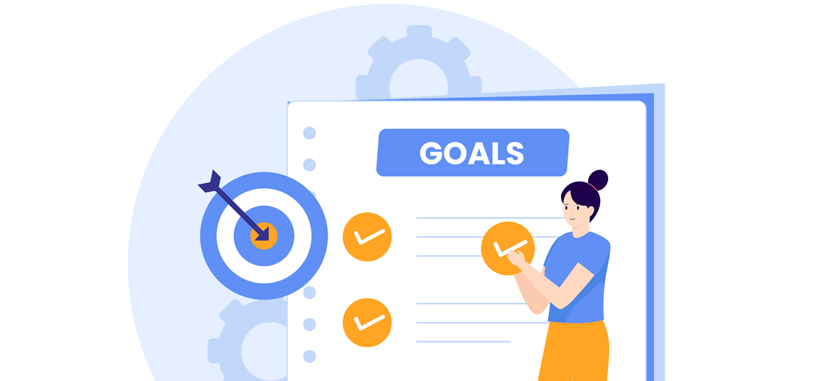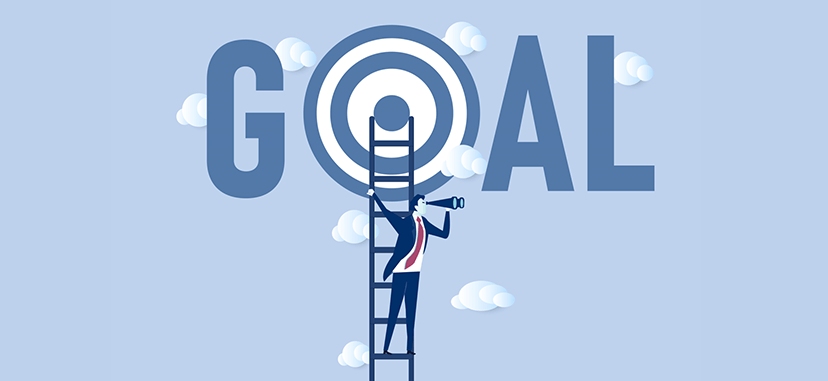
Click the button to start reading
Navigating Your Career Path: Strategic Goal-Setting for Professional Advancement
The Catalyst for Your Career Journey
Ever found yourself staring out the office window, pondering over your career path and where it’s headed? It’s a moment we’ve all faced, a crossroads of sorts, where the next steps seem foggy, uncertain. But here’s a nugget of truth that’s as golden as it is timeless: the compass you need for this journey lies in setting personal goals at work.
Why, you ask? Well, personal goals are more than just milestones; they’re the sparks that ignite professional growth, propelling you towards a career that doesn’t just pay the bills but fulfills you. They’re about stepping out of the comfort zone, stretching those ambition muscles, and reaching heights you’ve only dreamed of.
In this guide, you’ll embark on a voyage of discovery. You’ll learn not just the why but the how of setting personal goals that transform your work life from mundane to extraordinary. And it’s not just about lofty aspirations; it’s about tangible, actionable steps that bring you closer to the career you’ve always wanted.

The Importance of Personal Goals for Professional Growth
Think of your career as a garden. Just as plants need the right soil, sunlight, and water to thrive, your career needs goals to grow, flourish, and bear fruit.
Personal goals act as the nutrients, providing direction, focus, and a sense of purpose. Without them, you’re like a ship sailing without a compass; you might move, but the chances of reaching your desired destination are left to the whims of the sea.
Goals give you a target—something to aim for. They’re the benchmarks that push you to learn more, do more, and be more. When you set personal goals, you’re not just wishing for advancement; you’re actively working towards it. It’s the difference between waiting for opportunities to come knocking and creating those opportunities yourself.
A Quick Roadmap of What Readers Will Gain from This Guide
By the end of this journey, you’ll not only understand the transformative power of personal goals, but you’ll also be armed with the tools to set and achieve them. You’ll discover:
- How to define goals that resonate with your deepest career aspirations.
- Strategies to ensure your goals are realistic, achievable, and aligned with your professional growth.
- Techniques to keep your motivation burning, even when obstacles seem insurmountable.
- Insights from the fields of business, marketing, project management, productivity, business coaching, and team building to enrich your goal-setting process.
This guide is more than just a collection of tips and advice. It’s a roadmap to a more fulfilling career, designed with you in mind. Whether you’re a budding entrepreneur, a marketing maestro, a project management guru, a productivity whiz, a seasoned business coach, or a team-building expert, there’s something in here for everyone.
So, let’s roll up those sleeves and dive in. Your career journey is about to get a whole lot more exciting.

The Art of Setting Personal Goals at Work
So, you’re keen on upping your game at work? That’s a fantastic mindset to have. Whether you’re aiming to climb the career ladder, switch roles, or simply find more fulfillment in your daily tasks, setting personal goals is the way to go.
But not all goals are created equal. Let’s delve into what makes a goal not just good, but great, and how to craft ones that pave the way for real, tangible success.
Unpacking What Constitutes a Meaningful Personal Goal
A meaningful personal goal at work is something that goes beyond the everyday tasks. It’s a beacon that guides your professional journey, giving you direction and purpose. But how do you distinguish a meaningful goal from a mere to-do list item?
- Alignment with Your Values and Career Aspirations: The goals you set should resonate with what you truly value and aspire to be in your career. If leadership is important to you, aiming for a management position could be a goal. If creativity fuels you, seeking projects that allow creative freedom might be your target.
- Challenging Yet Achievable: It’s about finding that sweet spot between too easy and impossibly hard. A goal that pushes you out of your comfort zone but remains within the realm of achievability keeps you motivated and engaged.
- Impact: Consider the broader impact of achieving your goal. Will it open new doors? Will it enrich your skill set? If your goal has the potential to significantly improve your professional life, it’s a keeper.
Consider Sarah, a marketing specialist who loves her job but feels something’s missing. She sets a goal to lead a high-stakes project, aligning with her desire for leadership and challenge. This goal isn’t just about adding a line to her resume; it’s about proving to herself that she can step up, lead a team, and deliver results.
The SMART Framework for Goal-Setting
The SMART framework isn’t new, but its effectiveness in setting personal goals at work can’t be overstated. Let’s break it down:
- Specific: Vague goals get vague results. A goal like “improve sales numbers” is less effective than “increase sales by 10% in the next quarter by introducing a new sales strategy.”
- Measurable: How will you know you’ve achieved your goal? If it’s increasing sales by 10%, the numbers will tell you when you’ve hit your target.
- Achievable: Is your goal realistic, given your resources, skills, and timeframe? Setting the bar too high can lead to frustration and burnout.
- Relevant: Does this goal make sense for your career right now? It should align with your larger career objectives and the current needs of your team or company.
- Time-bound: Set a deadline. A goal without a timeframe is just a dream. The pressure of a deadline can be motivating and help prioritize your efforts.
For example, Tom, a project manager, sets a goal to “Enhance team productivity by implementing a new project management tool within the next three months.”
This goal checks all the SMART boxes: it’s specific (introducing a new tool), measurable (productivity enhancement can be tracked), achievable (with the right planning and resources), relevant (it directly impacts his team’s efficiency), and time-bound (three months).
By focusing on what makes a goal meaningful and applying the SMART framework, you’re not just setting goals. You’re laying down a path for professional growth, satisfaction, and success.
Remember, the most rewarding goals are the ones that push you to learn, grow, and surpass your own expectations. Let’s set those goals with intention, clarity, and a bit of boldness. Your future self will thank you.

Kickstarting Your Goal-Setting Journey with Examples
Let’s dive into some examples, shall we? Setting personal goals at work is a bit like choosing a destination for your next big adventure. You know you want it to be memorable, rewarding, and, above all, achievable. Here are some real-life examples and strategies to spark inspiration for your own goal-setting journey.
Goals to Set for Yourself at Work: From Mastering New Skills to Fostering Better Teamwork
- Master a New Skill: In today’s fast-paced work environment, staying ahead means constantly adding new tools to your toolbox. Suppose you’re in digital marketing; learning search engine optimization (SEO) could be a game-changer for your career. Set a goal to complete an SEO certification in the next six months. Not only does this enhance your skill set, but it also makes you a valuable asset to your team.
- Enhance Communication Skills: Effective communication is the backbone of successful teamwork. If you’ve noticed your project handovers could be smoother, aim to improve your communication skills. Attend a workshop or webinar on effective communication strategies within the next quarter. You’ll see the difference in team dynamics and project outcomes.
- Foster Better Teamwork: Imagine your team working seamlessly, with each member playing to their strengths and supporting each other. Set a goal to organize monthly team-building activities. It could be as simple as a brainstorming session outside the office or a team lunch. These initiatives boost morale and encourage collaboration, leading to a more cohesive team.
Personal Development Goals for Work Examples: Strategies for Career Elevation Through Learning and Growth
- Seek a Mentor: Having a mentor can accelerate your career progression. They offer insights, advice, and guidance based on their experiences. Set a goal to identify and approach a potential mentor in your field within the next month. This relationship can open doors to new opportunities and perspectives.
- Expand Your Professional Network: Your network can be a great source of new opportunities and insights. Aim to attend at least one industry-related networking event or conference every quarter. Make it a point to connect with at least three new people at each event. These connections can be invaluable as you navigate your career path.
- Undertake a Leadership Role: Leadership experience is crucial for career advancement. Look for opportunities to lead, whether it’s managing a small project or heading a committee at work. Set a goal to volunteer for a leadership position in the next opportunity that arises. This will not only showcase your initiative but also give you a taste of leadership’s challenges and rewards.
In each of these examples, the key is to make your goals specific, measurable, achievable, relevant, and time-bound (SMART). Whether it’s mastering a new skill, improving team dynamics, or stepping into a leadership role, remember that the journey toward achieving these goals is as important as the destination itself. With each step forward, you’re not just moving closer to your goals; you’re shaping the professional you aspire to become.

Elevating Your Career with Personal Development Goals
Ever paused to think about the heights personal development could whisk you off to? It’s not just about climbing the career ladder; it’s about enriching your professional journey, making every step forward deeply satisfying and impactful.
The Crucial Role of Personal Development in Work Satisfaction and Career Progression
Personal development is the secret sauce to not just surviving but thriving in your career. It’s about becoming more self-aware, identifying your strengths and weaknesses, and leveraging them to your advantage. This ongoing process ensures you’re not just meeting expectations but exceeding them, leading to higher job satisfaction and more opportunities for advancement.
Consider the story of Alex, who felt stuck in their job as a graphic designer. By dedicating time to personal development, Alex learned new design software and explored areas of design they hadn’t touched before. Six months later, Alex was not only leading design projects but also mentoring junior designers, showcasing the transformative power of personal development.
Crafting a Comprehensive Personal Development Plan: Essential Steps and Strategies
Creating a personal development plan isn’t rocket science, but it does require thoughtful reflection and a structured approach.
- Self-Assessment: Start by taking stock of your current skills and comparing them against where you want to be. Identify the gaps.
- Goal Setting: Use the SMART framework to set goals that address these gaps.
- Action Plan: Outline specific actions you’ll take to achieve these goals. This could include taking courses, reading books, or seeking feedback.
- Review and Adjust: Regularly review your progress and adjust your plan as needed. Remember, flexibility is key.

Turning Goals into Achievements
Ready to transform those aspirations into tangible successes? Let’s get into the nitty-gritty of making it happen.
Tips for Maintaining Momentum: Accountability, Setting Milestones, and Celebrating Achievements
- Accountability: Partner up with a colleague or mentor who can check in on your progress. This external accountability can be a powerful motivator.
- Setting Milestones: Break down your goals into smaller, manageable milestones. Celebrating these smaller victories keeps the motivation high and provides a sense of progress.
- Overcoming Obstacles: Challenges are inevitable, but they’re also growth opportunities. When faced with obstacles, remind yourself why you set these goals in the first place. Adjust your strategies if needed, but keep your eyes on the prize.

Identifying Good Personal Goals for Work
Ever wondered what makes a goal truly ‘good’ in the grand tapestry of your career? It’s about alignment and balance.
Aligning Personal Ambitions with Career Goals and Organizational Objectives
The most effective goals serve a dual purpose: they drive your personal growth and contribute to your organization’s success. For instance, improving your public speaking skills could lead to more effective presentations, benefiting both you and your company.
Finding the Sweet Spot Between Ambition and Practicality
It’s essential to dream big but also to stay grounded. Ambitious goals that stretch you are great, but they should also be achievable within your current context. This balance ensures you’re pushing your limits without setting yourself up for frustration.
Conclusion: Charting Your Path to Success
To wrap up, the journey to setting and achieving personal goals at work is both challenging and rewarding. It requires introspection, planning, and action. But the first step? That’s right, writing down your goals.
By setting clear, achievable goals, you’re not just dreaming about the future; you’re actively building it. Whether it’s enhancing your skills, growing your network, or stepping into a leadership role, each goal you set and achieve is a building block in the edifice of your career.
















